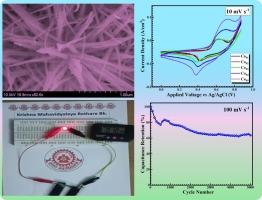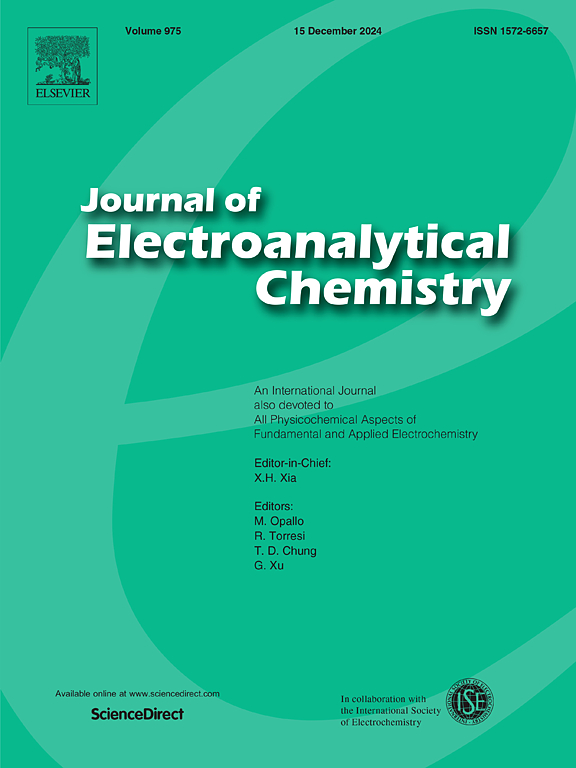水热法合成具有潜在超级电容器应用前景的 Co3O4 纳米线自支撑分层微流体
IF 4.1
3区 化学
Q1 CHEMISTRY, ANALYTICAL
引用次数: 0
摘要
本研究采用双重水热法,在泡沫镍上合成了超薄花状结构的尖晶石结构 Co3O4 电极,随后在 250 °C 下退火 4 小时。我们系统地研究了不同反应时间和第二次水热过程中额外的 Co2+ 处理对 Co3O4 形貌和电化学特性的影响。场发射扫描电子显微镜(FE-SEM)图像证实了自支撑分层花的形成,其特征是尖锐的穗状纳米线(直径 16-33 nm)呈放射状排列。自支撑优化分层 Co3O4 薄膜具有独特的结构和 4.6 mg cm-2 的大量负载,在 2 M KOH 电解液中以 10 mV s-1 的扫描速率获得了 749.48F g-1 的惊人比电容(比容量为 182.16 mAh g-1),并且在 5000 次循环后保持了 64% 的初始电容。此外,当两个器件串联时,对称器件能够点亮红色 LED 约 120 秒。本文章由计算机程序翻译,如有差异,请以英文原文为准。

Hydrothermal synthesis of self-supported hierarchical microflowers of Co3O4 nanowires for potential supercapacitor application
This study explores the synthesis of ultrathin flower architecture of spinel-structured Co3O4 electrodes, on nickel foam using a double hydrothermal method, followed by annealing at 250 °C for 4 h. We systematically investigate the effects of varying reaction times and additional Co2+ treatment during the second hydrothermal process on the morphology and electrochemical properties of Co3O4. Field emission scanning electron microscopy (FE-SEM) images confirm the formation of self-supported hierarchical flowers, characterized by sharp, spike-like nanowires (16–33 nm in diameter) arranged radially. The self-supported optimized hierarchical Co3O4 thin film, characterized by its unique architecture and substantial mass loading of 4.6 mg cm−2, achieved an impressive specific capacitance of 749.48F g−1 at a scan rate of 10 mV s−1 (specific capacity of 182.16 mAh g−1) in 2 M KOH electrolyte and retained 64 % of its initial capacitance after 5000 cycles. Furthermore, a symmetric device demonstrated the ability to illuminate a red LED for approximately 120 s when two devices were connected in series.
求助全文
通过发布文献求助,成功后即可免费获取论文全文。
去求助
来源期刊
CiteScore
7.80
自引率
6.70%
发文量
912
审稿时长
2.4 months
期刊介绍:
The Journal of Electroanalytical Chemistry is the foremost international journal devoted to the interdisciplinary subject of electrochemistry in all its aspects, theoretical as well as applied.
Electrochemistry is a wide ranging area that is in a state of continuous evolution. Rather than compiling a long list of topics covered by the Journal, the editors would like to draw particular attention to the key issues of novelty, topicality and quality. Papers should present new and interesting electrochemical science in a way that is accessible to the reader. The presentation and discussion should be at a level that is consistent with the international status of the Journal. Reports describing the application of well-established techniques to problems that are essentially technical will not be accepted. Similarly, papers that report observations but fail to provide adequate interpretation will be rejected by the Editors. Papers dealing with technical electrochemistry should be submitted to other specialist journals unless the authors can show that their work provides substantially new insights into electrochemical processes.

 求助内容:
求助内容: 应助结果提醒方式:
应助结果提醒方式:


